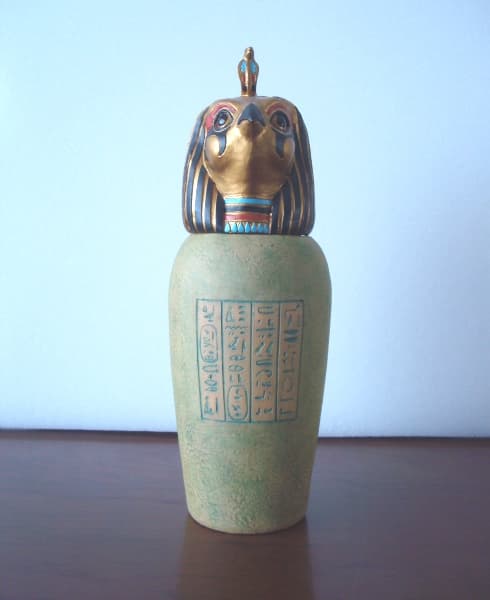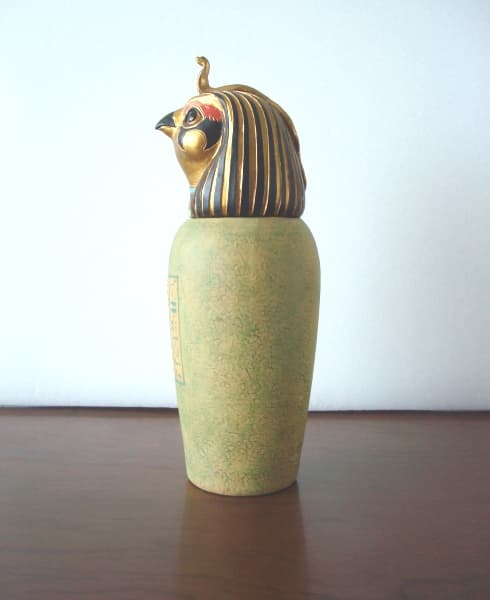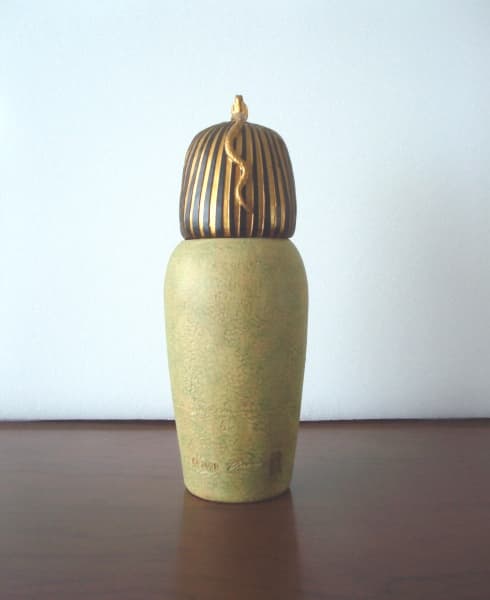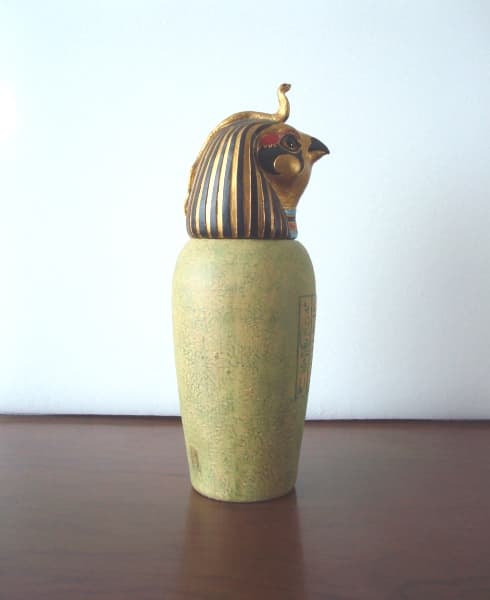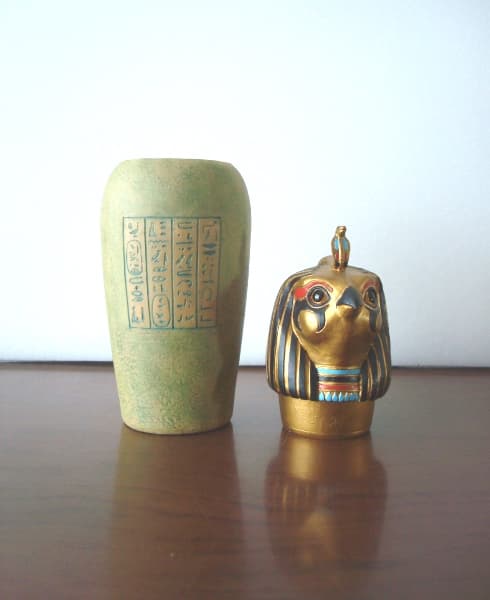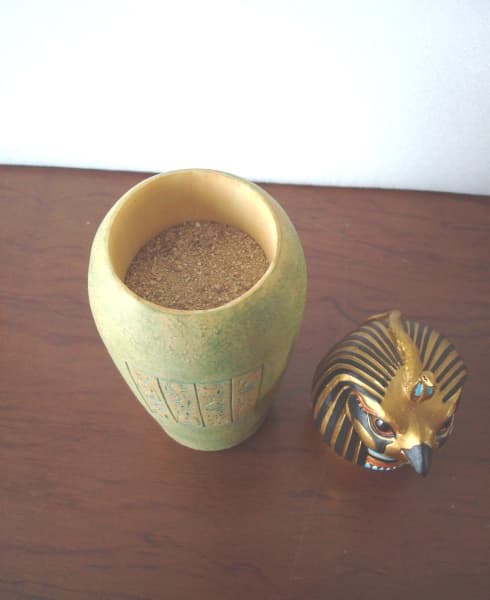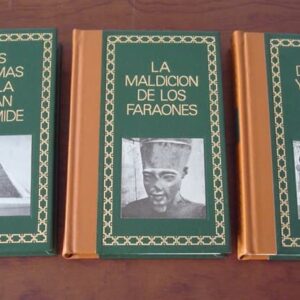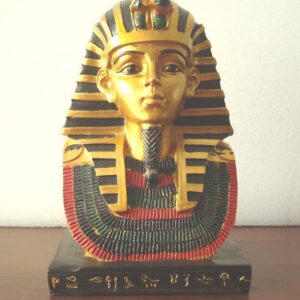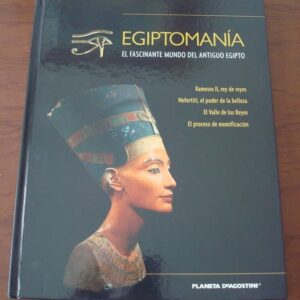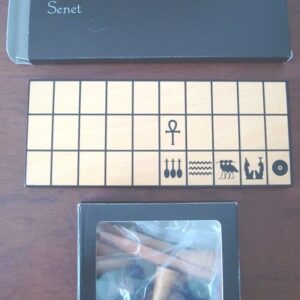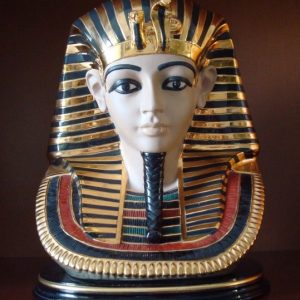Description
Extraordinary and beautiful canopic vessel reproduction of Ancient Egypt, made by Veronese in 2001, with the lid of the god Kebeshenuef in the shape of a falcon’s head.
This unique canopic glass is filled with the sand that surrounds the Great Pyramid of Cheops, brought specifically to fill this glass from Egypt.
Made with high quality resins, polychrome and gilded by hand. Total height: 19.5 cm. Total width: 7 cm. Total weight: 763 gr. In perfect condition, new.
Qebehsenuf, Qebsenuf or Kebeshenuef is one of the four sons of Horus and Hathor in Egyptian mythology. His name means “he who refreshes his brothers” and he is a divinity associated with the protection of the West.
At the beginning, since its appearance during the VI Dynasty, the canopic vessels were closed with a flat slab but at the beginning of the New Kingdom the stopper took the shape of the head of the deceased and since the end, in the Ramesside era, that of the head of each of the geniuses that protected the functioning of the organ in the living body, and had to be ritually oriented towards one of the cardinal points. Called Sons of Horus, they protected their contents from destruction. The divinities represented were:
Amset: vessel with a lid in the shape of a human head, which kept the liver (to the South).
Hapy: vessel with a lid in the shape of a baboon’s head, where the lungs were deposited (to the North).
Kebeshenuef: vessel with a lid in the shape of a falcon’s head, which contained the intestines (to the West).
Duamutef: vessel with lid in the shape of a jackal, with the stomach of the deceased (to the East).
Shipping costs paid by the buyer, according to order and destination. Ask us any questions you may have, indicating the article reference.




